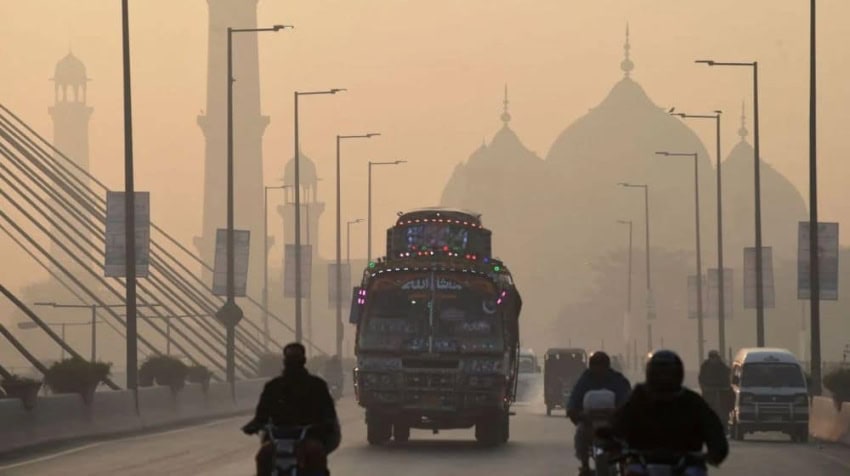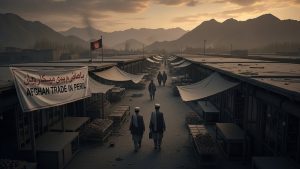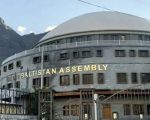“Love is in the air but the air is highly polluted.” – Amit Abraham
It’s not something unusual that Lahore has once again been engulfed by the toxicity of smog that is putting the lives of scores of people at stake. But during the surge of COVID-19 last year, the combination of smog and the global pandemic had turned out both as boon and bane because it backed both aspects. This implies that the pandemic has lowered environmental pressure in one of the top most polluted cities of the world i.e., coronavirus mortality rate was high in affected regions. Significantly, lockdown also dropped the air pollution rates during the pandemic last year.
After the lockdown, many surveys were conducted in hospitals which showed that after a consecutive lockdown of weeks. It proved that the major decline was observed in hospitals where lesser children complained of asthma problems. In the winter months, with delayed rainfall, the cold and continuously dry conditions concentrate all the pollutants in the lower levels of the atmosphere, causing the smog to spread all over Punjab especially, in the City of Gardens. Moreover, punitive measures were taken against the farmers who burn stubble and clamp down on brick kilns. The abrupt increase in the number of vehicles in Lahore during recent past has resulted in worsening air quality.
Children and pregnant women are more prone to smog hazards because air pollution’s toxicity returns every year with more severity and extremity. The diesel fumes, the toxic smoke from the burning of seasonal crops, and colder winter temperatures merge into stagnant clouds of smog, this has deteriorated the condition in Pakistan’s plains.
Apart from these factors, prolonged or heavy exposure to hazardous air cause varied health complications, including asthma, lung damage, bronchial infections, strokes, heart problems, and rest. In this prevailing smog, you cannot stop breathing without hurting yourself. It not only irritates your eyes but also your nose and throat and can cause heart and lung complications which can result in death.
Last year, Lahore was ranked the most polluted city in the world by Air Quality Index and now almost 14 million residents are under the shadow of smog which sets a unique record for the world’s most polluted city.
The primary purpose of environmental law is to secure the climate and make rules for individuals, reformation is yet to be needed because, without these laws, there would be no guidelines concerning contamination and tainting. In fact, the public authority needs some primary improvements like reforming its laws (278 of PPC 1860) the violators should be charged with hefty fines instead of Rs.500 or less. Despite this, when the shrewd decision of the former PM Imran Khan got the nod for the use of electric automobiles, it could be predicted that this would be a major curb for air pollution because it does not produce carbon dioxide (CO2) emissions which would ultimately improve the air quality in Lahore and its outskirts.
Such air quality paves the way for gross human rights violations because our fundamental right to life is threatened by soil degradation, deforestation, and exposure to toxic chemicals, hazardous wastes, and contaminated drinking waters. The UNHRC data shows a grave concern for the environmental issue and declared that having a clean, healthy, and sustainable environment is a human right.
On the other hand, the (GAHP) Global Alliance on Health and Pollution estimated in 2019 that 128,000 Pakistanis died annually due to air pollution-related illnesses. Interestingly, in London 1952, the lethal smog that covered the city of London only for five days killed between 8,000 – 12,000 people. Known as the “Great Smog of London”, it was caused by a combination of industrial pollution and high-pressure weather conditions. After five days of living in a sulfurous hell, the ‘Great Smog’ finally lifted on December 9, when a brisk wind from the west swept the toxic cloud away from London and out to the North Sea. So, the point is the solution would be enough if the government escalated some measures like the closure of all schools, colleges, and universities, and the cancellation of flights despite the business continuing as usual in Lahore.
In the same way, the government needs to do some preventive and speedy remedies to combat this and adopt long-term planning to address this toxic disorder. For a better future, anthropogenic emissions need to be controlled because vaccines are effective against pandemics and not against air pollution.














